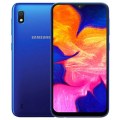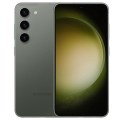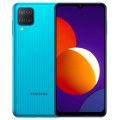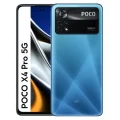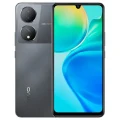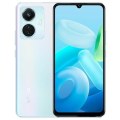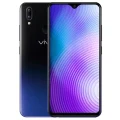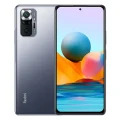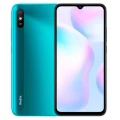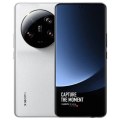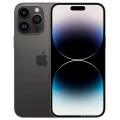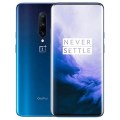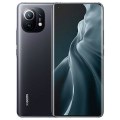- Awesome page
- Latest Mobile
- Smartphones
- Samsung Galaxy J7
Samsung Galaxy J7
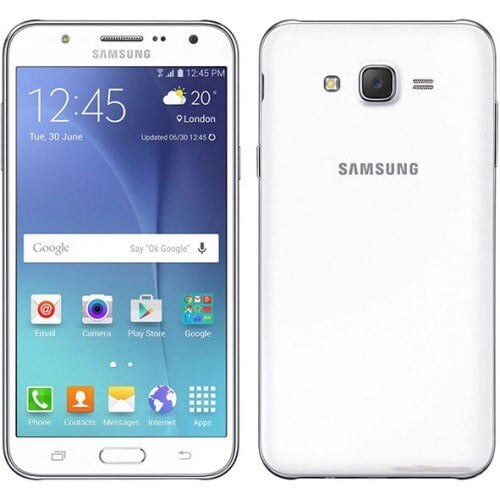


Samsung Galaxy J7 Price in Bangladesh
The Samsung Galaxy J7 is currently priced at BDT 19,000. This smartphone features a 5.5-inch Super AMOLED display and is powered by a 1.4 GHz octa-core processor. It comes with 1.5 GB of RAM and 16 GB of internal storage, which can be expanded up to 256 GB using external storage. The device boasts a stylish design with a 13 MP rear camera and a 5 MP front camera for selfies. It is equipped with a standard 3000 mAh Li-Ion battery.
Specifications
General
| Model | Samsung Galaxy J7 |
| Announced | 2015, June |
| Released | 2015, June |
| Status | Available |
Design
| Dimensions | 152.2 x 78.7 x 7.5 mm (5.99 x 3.10 x 0.30 in) |
| Weight | 171 g (6.03 oz) |
| Colors |
White, Black, Gold |
Network
| Technology | GSM / HSPA / LTE |
| 2G Network |
GSM 850 / 900 / 1800 / 1900 - SIM 1 & SIM 2 (dual-SIM model only) |
| 3G Network |
HSDPA 850 / 900 / 1900 / 2100 |
| 4G Network |
LTE band 1(2100), 3(1800), 5(850), 7(2600), 8(900), 20(800), 40(2300) |
| GPRS <strong>GPRS</strong> (General Packet Radio Service) is a packet oriented mobile data service on the 2G and 3G cellular communication system's global system for mobile communications (GSM), Generally, GPRS is used for the purpose of wireless data transfer, such as sharing pictures and videos or browsing the Internet via a mobile phone connection. | |
| EDGE <strong>EDGE</strong> (Enhanced Data GSM Environment) is a wireless network technology generally considered the next step in the 2G network offers data transfer rates up to four times faster than ordinary GSM networks, Generally, EDGE is used for the purpose of wireless data transfer, such as sharing pictures and videos or browsing the Internet via a mobile phone connection. | |
| Speed | HSPA 21.1/5.76 Mbps HSPA, LTE Cat4 150/50 Mbps |
Display
| Display Type <strong>Display Technology => </strong> A number of display technologies and types used in mobile phones => TFT (Thin Film Transistor), IPS (In-Place Switching), OLED (Organic Light Emitting Diode), AMOLED (Active-Matrix Organic Light-Emitting Diode), Super AMOLED (an even advanced version of AMOLED), Resistive Touchscreen (Resistive touchscreens contain two layer of conductive material with a very small gap between them which acts as a resistance), Capacitive Touchsceen (Capacitive touchscreen technology consists of a layer of glass coated with a transparent conductor) | Super AMOLED capacitive touchscreen, 16M colors |
| Size | 5.5 inches, 83.4 cm2 (~69.6% screen-to-body ratio) |
| Resolution | 720 x 1280 pixels, 16:9 ratio (~267 ppi density) |
Camera
Main camera
| Camera Setup | Single |
| Primary <strong>Camera</strong> is able to capture photographs and usually videos, The most important characteristics of a camera are the resolution (measured in megapixels), lens focus type (fixed or automatic), higher megapixel cameras are known to capture higher quality photos, but not always a good measurement of the photos quality. |
13 MP, f/1.9, 28mm (wide), AF |
| Features |
LED flash, panorama |
| Video | 1080p@30fps |
Selfie camera
| Camera Setup | Single |
| Primary <strong>Camera</strong> is able to capture photographs and usually videos, The most important characteristics of a camera are the resolution (measured in megapixels), lens focus type (fixed or automatic), higher megapixel cameras are known to capture higher quality photos, but not always a good measurement of the photos quality. |
5 MP, f/2.2, 23mm (wide) |
Hardware
| Chipset <strong>Chipset</strong> is a group of integrated circuits designed to perform one or a more dedicated functions, often with real time computing constraints, Popular smartphones are equipped with more advanced embedded chipsets that can do many different tasks depending on their programming. | Exynos 7580 Octa |
| CPU <strong>CPU</strong> (Central Processing Unit) mostly known as processors, CPU processes instructions in order to carry out certain functions that make your device operate properly. Processors are often described as the brain of computers, smartphones and tablets, Smartphones and tablets rely on processors to carry out their every task, Processors are an incredibly important factor in selecting any type of computing device, including your smartphone. | Octa-core (4x1.4 GHz Cortex-A53 & 4x1.0 GHz Cortex-A53) Octa-core 1.5 GHz Cortex-A53 |
| GPU <strong>GPU</strong> (Graphics Processing Unit) is a single-chip processor designed to rapidly manipulate and alter memory to accelerate the creation of images in a frame buffer intended for output to a display, This includes things such as lighting effects, object transformations, and 3D motion. | Adeno 405 |
| RAM (Memory) <strong>RAM</strong> (Random Access Memory) is a type of computer memory that can be accessed randomly, any byte of memory can be accessed without touching the preceding bytes that allows information to be stored and accessed quickly from random locations. RAM is the most common type of memory found in computer systems, smartphones, tablets and other electronic devices. | 1.5 GB RAM |
| Internal Storage <strong>Internal Storage</strong> is a data storage space (flash memory) mostly used in smartphones, tablets and other electronic devices where operating system, apps, music, photos, videos, files and other user data Is stored. | 16 GB |
| Sensors <strong>Sensors</strong> are electronic components that detects and responds to some type of input from the physical environment. The specific input could be light, heat, motion, moisture, pressure and location, The output is generally a signal that is converted to use in computing systems, a location sensor, such as a GPS receiver is able to detect current location of your electronic device. |
Accelerometer, proximity |
Connectivity
| Bluetooth <strong>Bluetooth</strong> is a wireless communications technology for exchanging data between mobile phones, headsets, computers and other network devices over short distances without wires, Bluetooth technology was primarily designed to support simple wireless networking of personal consumer devices. | 4.1, A2DP |
| Infrared <strong>Infrared</strong> connectivity is an old wireless technology used to connect two electronic devices. It uses a beam of infrared light to transmit information and so requires direct line of sight and operates only at close range. | |
| USB | Yes, with A-GPS, GLONASS |
| GPS <strong>GPS</strong> The Global Positioning System is a satellite-based radio navigation system, GPS permits users to determine their position, velocity and the time 24 hours a day, in all weather, anywhere in the world, In order to locate your position, your device or GPS receiver must have a clear view of the sky. | microUSB 2.0 |
| NFC <strong>NFC</strong> (Near field communication) is a set of standards for smartphones and similar devices to establish peer-to-peer radio communications with each other by touching them together or bringing them into proximity, usually no more than a few inches. |
Battery
| Battery Type <strong>Battery Type => </strong> Cell phones run on various kinds of batteries depending on the manufacturer, phone size or shape and features. There are basically four types of cell phone batteries => Lithium Polymer, Lithium Ion, Nickel Metal Hydride and Nickel Cadmium. | Non-Removable Li-Po |
| Capacity <strong>Battery Capacity</strong> is a measure (typically in Amp-hr) of the charge stored by the battery, and is determined by the mass of active material contained in the battery. The battery capacity represents the maximum amount of energy that can be extracted from the battery under certain conditions. | 3000 mAh battery |
Samsung Galaxy J7 Review – Is This Mid-Range Marvel Worth It?
Introduction
The smartphone market is saturated with a myriad of options, each promising to deliver the best experience. Amidst this competitive landscape, the Samsung Galaxy J7 has managed to carve out a niche for itself. This review aims to dissect the J7’s offerings, providing you with a comprehensive understanding of whether this device stands up to its promises. From tech enthusiasts to casual smartphone shoppers, this review of the Samsung Galaxy J7 will guide you through its design, performance, camera quality, and overall value.
Design and Display
Sleek and Stylish
The Samsung Galaxy J7 sports a sleek, modern design that feels premium despite its mid-range price tag. Its metal frame and smooth curves fit comfortably in hand, offering both aesthetic appeal and practical ergonomics. The placement of buttons and ports is intuitive, making it easy to use even with one hand.
Visual Experience
The J7 boasts a 5.5-inch Super AMOLED display, which is a standout feature for a phone in this price range. The screen delivers vibrant colors and deep contrasts, providing an immersive visual experience whether you’re watching videos or browsing photos. Its HD resolution of 1280 x 720 pixels may not be cutting-edge, but it offers sharp and clear visuals that are more than sufficient for day-to-day use.
Durability
Build quality is another area where the J7 impresses. The phone’s sturdy construction ensures it can withstand everyday wear and tear. Although it’s not entirely resistant to drops, its robust design offers a sense of durability that’s reassuring for users prone to accidental knocks and bumps.
Performance and Battery Life
Under the Hood
Powered by an Exynos 7870 Octa-core processor and 2GB of RAM, the Galaxy J7 delivers reliable performance for most tasks. Whether you’re multitasking between apps, streaming media, or playing casual games, the J7 handles it without noticeable lag. It’s not designed for high-end gaming or intense multitasking, but for everyday use, it performs admirably.
Smooth Operations
Operating on Android with Samsung’s TouchWiz interface, the J7 ensures a smooth and user-friendly experience. The software is optimized well for the hardware, reducing instances of stutter or delay. Basic operations like swiping through screens, launching apps, and navigating menus are fluid and responsive.
Long-lasting Battery
One of the J7’s strongest suits is its battery life. Equipped with a 3300mAh battery, the phone easily lasts a full day on a single charge, even with moderate to heavy use. Whether you’re working, streaming videos, or browsing social media, the J7’s battery holds up remarkably well, reducing the need for frequent recharging.
Camera Quality
Rear Camera Capabilities
The Samsung Galaxy J7 features a 13MP rear camera that performs well in various lighting conditions. Daytime shots are particularly impressive, capturing vivid colors and fine details. The camera’s autofocus is quick, ensuring that you don’t miss out on capturing those fleeting moments.
Front Camera for Selfies
Selfie enthusiasts will appreciate the J7’s 5MP front camera, which includes an LED flash—an uncommon feature in this segment. This ensures that your selfies come out well even in low light. The front camera also supports wide-angle shots, allowing you to fit more people into your selfies.
Video Recording
When it comes to video recording, the J7 supports Full HD (1080p) recording at 30fps. The video quality is decent, with good color reproduction and adequate stabilization. While it may not match the capabilities of flagship models, it’s more than satisfactory for everyday video capture.
User Experience
TouchWiz Interface
Samsung’s TouchWiz interface on the Galaxy J7 is intuitive and easy to navigate. The interface includes several Samsung-specific features like Smart Stay, which keeps the screen on as long as you’re looking at it, and Ultra Data Saving Mode, which helps conserve your mobile data usage.
Software Updates
The J7 receives regular software updates that improve performance and security. Samsung’s commitment to providing updates ensures that the user experience remains fresh and secure over time. These updates often include new features and enhancements that keep the device feeling up-to-date.
Customization Options
Customization is another strong point for the J7. The phone allows users to personalize their device with themes, wallpapers, and widgets. This means you can tailor the look and feel of your phone to match your personal style, making the J7 truly your own.
Price and Value
Affordable Excellence
One of the most compelling aspects of the Samsung Galaxy J7 is its price. Positioned as a mid-range smartphone, it offers excellent value for money. The combination of its design, performance, and features makes it a strong contender in its price bracket.
Competitive Comparison
When compared to other smartphones in its range, the J7 holds its ground well. While there are cheaper options available, few offer the same blend of quality and features. Competitors might offer higher resolution displays or more RAM, but the J7’s overall package is hard to beat.
Long-term Investment
Considering its build quality and regular software updates, the J7 serves as a long-term investment. It may not have the latest specs, but its reliability and performance ensure that it remains a worthy companion for an extended period.
Conclusion
The Samsung Galaxy J7 is a well-rounded smartphone that delivers on multiple fronts. Its design and display offer a premium feel, while its performance and battery life ensure dependable daily use. The camera capabilities, especially the inclusion of a front flash, cater to photography enthusiasts. Overall, the J7 offers excellent value for money, making it a great choice for tech enthusiasts, smartphone shoppers, and Samsung fans alike.
Explore more reviews and share your thoughts on the J7 in the comments below. For those interested in discovering more about Samsung’s offerings, check out our other articles on the site.
